Mt. Airy and College Hill: Similar Histories with Disparate Trajectories
- Anthony Gustely

- Oct 11, 2020
- 5 min read
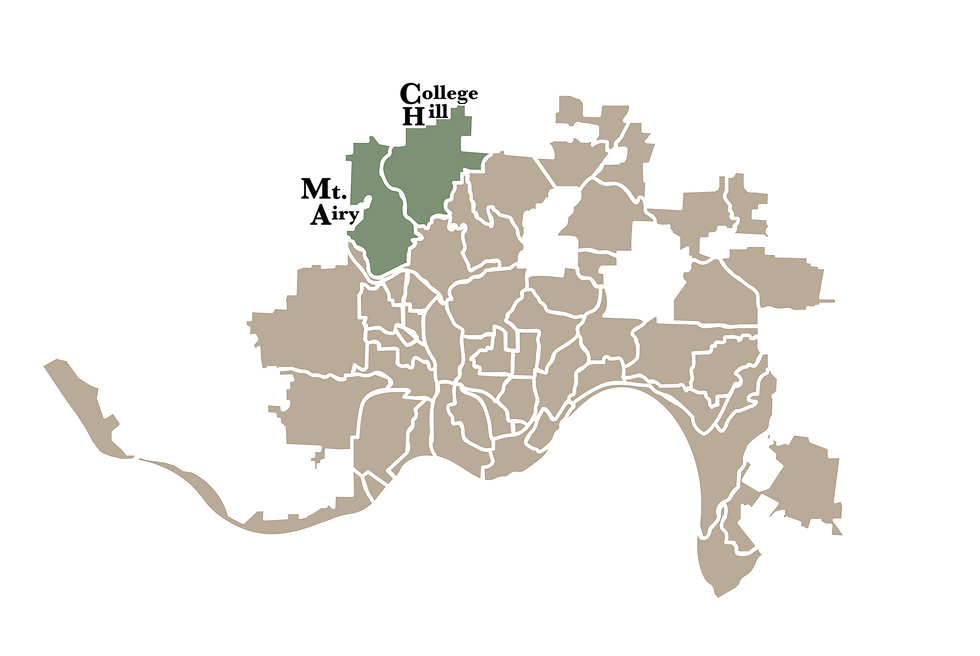
I've been saying this nearly every week, but I honestly cannot believe it's week 6 of 52 First Impressions already! I'm nearly a quarter of the way through this project and I couldn't be more excited to keep visiting Cincinnati's neighborhoods. This week I visited Mt. Airy and College Hill, which are both larger neighborhoods at the periphery of city limits on the West Side. Let's get into it:
Mt. Airy
Incorporated as a village in 1865 and annexed into Cincinnati in 1911, Mt. Airy was once a first-ring suburb that provided a pastoral escape from the City. Once primarily farmland, Mt. Airy's history truly began with the construction of Mt. Airy forest: the nation's first urban forest restoration project.
I decided to start my visit by taking a run in Mt. Airy Forest. The present-day Mt. Airy Forest began as dense, forested land. In the 1800s, the land was cleared for agricultural use. Years of poor grazing patterns and poor maintenance of the land led to degraded soil and erosion. Seeing the land as a key opportunity to provide amenities in a natural context, the City of Cincinnati embarked on re-foresting the area in 1911. Over the course of the next few decades, Mt. Airy forest would be transformed into 1,459 acres of hiking trails, mountain biking trails, picnic areas, pavilions, a public treehouse, dog park and disc golf course.


It's important to note that people of color are to credit for the success and beauty of the park today:
"A crew of young African Americans were employed by the Civilian Conservation Corps (a federal jobs program during the Great Depression) to build service roads, the large check dams in West Fork Creek and—along with more skilled laborers working for the Works Progress Administration—most of the shelter, service and restroom buildings. They also planted more than one million trees. " - via the Mt. Airy Forest webpage on the Cincinnati Parks Website
The views on my run were absolutely stunning. I assume that local cross country teams probably utilize the countless trails within the forest because they seem pretty extensive. Exercising in Mt. Airy Forest was a great way to kick off my day (even though I suck at running). I also checked out the public treehouse (the only wheelchair accessible one in Ohio), and it was a super unique find. I'll definitely be back to check out some more trails, and you should too! Mt. Airy Forest is only about a ten minute drive from UC and provides a quiet and serene location to walk your dog, take a hike, exercise, or eat a lunch with a friend.


While Mt. Airy Forest makes up around half of the neighborhood's land area, there's also more to see in the community. I snapped a pic of the medieval looking Mt. Airy Water towers, which supply water to the community. Built from 1926-27, the water towers are actually the highest point within Cincinnati city limits. The site is also home to Mt. Airy welcome signs.
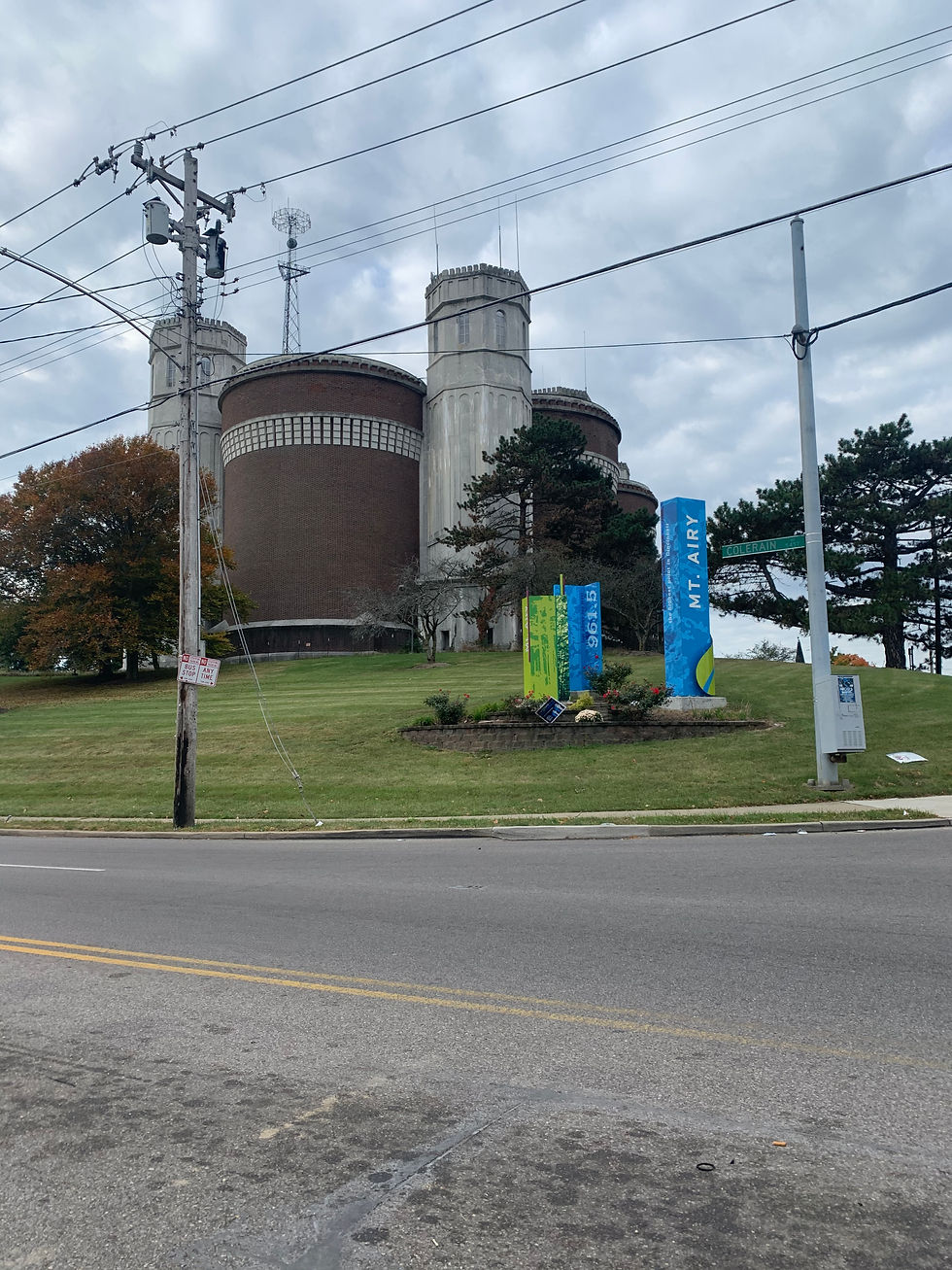
I also dropped by Pinecroft at Crosley Estate, a large Tudor mansion sitting on an 18-acre estate that once belonged to Powel Crosley, Jr. Becoming rich through selling automobile parts, Crosley would go on to successfully invent his own radio, refrigerator, car, and purchase the Cincinnati Reds. The Reds would play at "Crosley Field" until the 1970s. The estate would sit idle after Crosley's death in 1961, before being converted into an event location. Pinecroft was listed on the National Register of Historic Places in 2008.
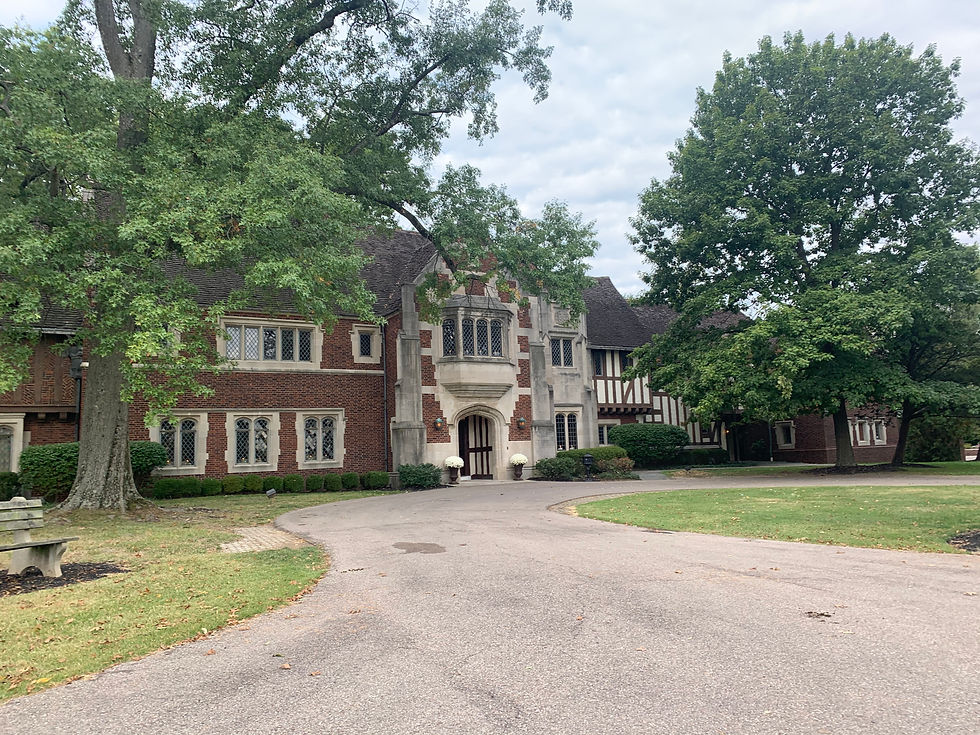
Context is important when delving into Mt. Airy's past and present. Over the past 4 or so decades, the neighborhood has been in decline. When measured by specific indicators including income, employment and quality-of-life, Mt. Airy has declined one of the most among all Cincinnati neighborhoods. The now mostly vacant commercial corridor is perhaps a large testament to divestment within the community. Despite this, there are multiple efforts being undertaken by the community to improve Mt. Airy, including redevelopment, streetscape improvement, and traffic calming along Colerain Avenue. Check out this article from a couple years back for more information about community improvement efforts!
College Hill
The wealthy suburb of Pleasant Hill was renamed College Hill in the mid-1800s because of the two colleges within the neighborhood in the 1850s. Incorporated as a village in 1866, it was annexed rather oddly in three separate stages: 1911, 1915, and 1923. Initial development of the neighborhood came in the 1850s and 1860s through the introduction of the railroad and the streetcar through the area. The 1911 streetcar map shows line 17 circle through College Hill and back into downtown.
My first stop in the neighborhood was to College Hill Coffee. Located along Hamilton Avenue, College Hill Coffee offers an array of drinks, breakfast, lunch, dinner, and unique gifts ranging in assortment. The shop is a community gathering space, a central location for community events like the Farmer's Market and live music on the weekends. I ordered an Irish Cream Iced Coffee and a slice of an iced pumpkin loaf, both of which were delicious. The vibe inside of the store was warm and cozy, with lots of cute trinkets to browse over. My favorite part about the shop was its patio seating out back, which is neatly secluded behind the storefront and away from the road.
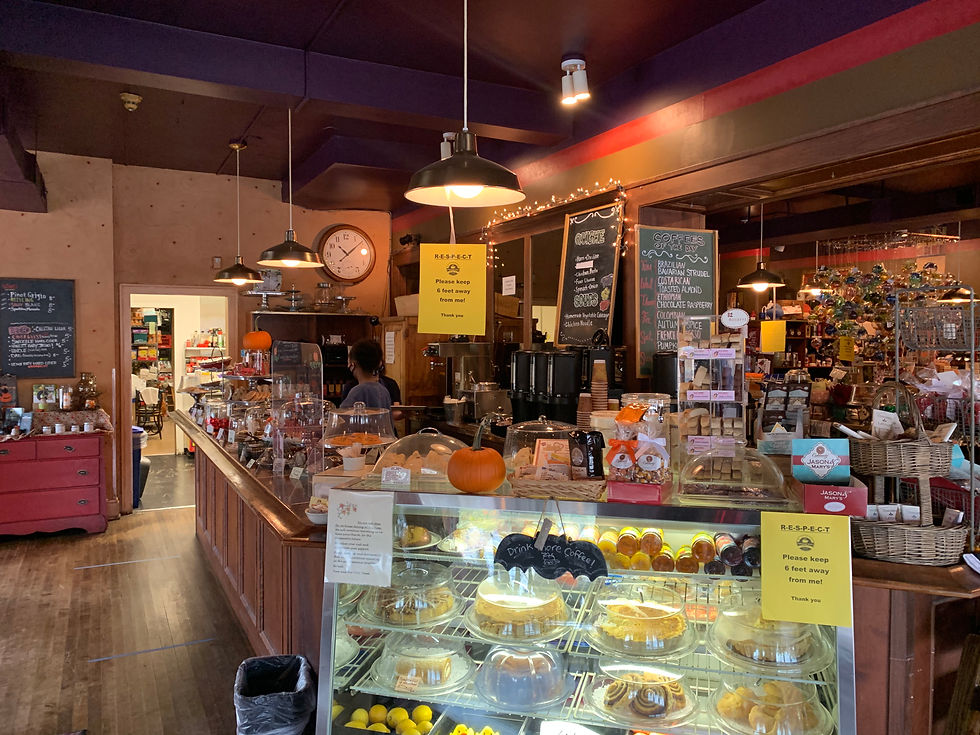
Although there inside seating was mostly closed due to COVID-19, this is one place I would love to come back to someday to do homework and grab a bite to eat. College Hill Coffee is definitely a community staple, with friendly staff and tasty food!
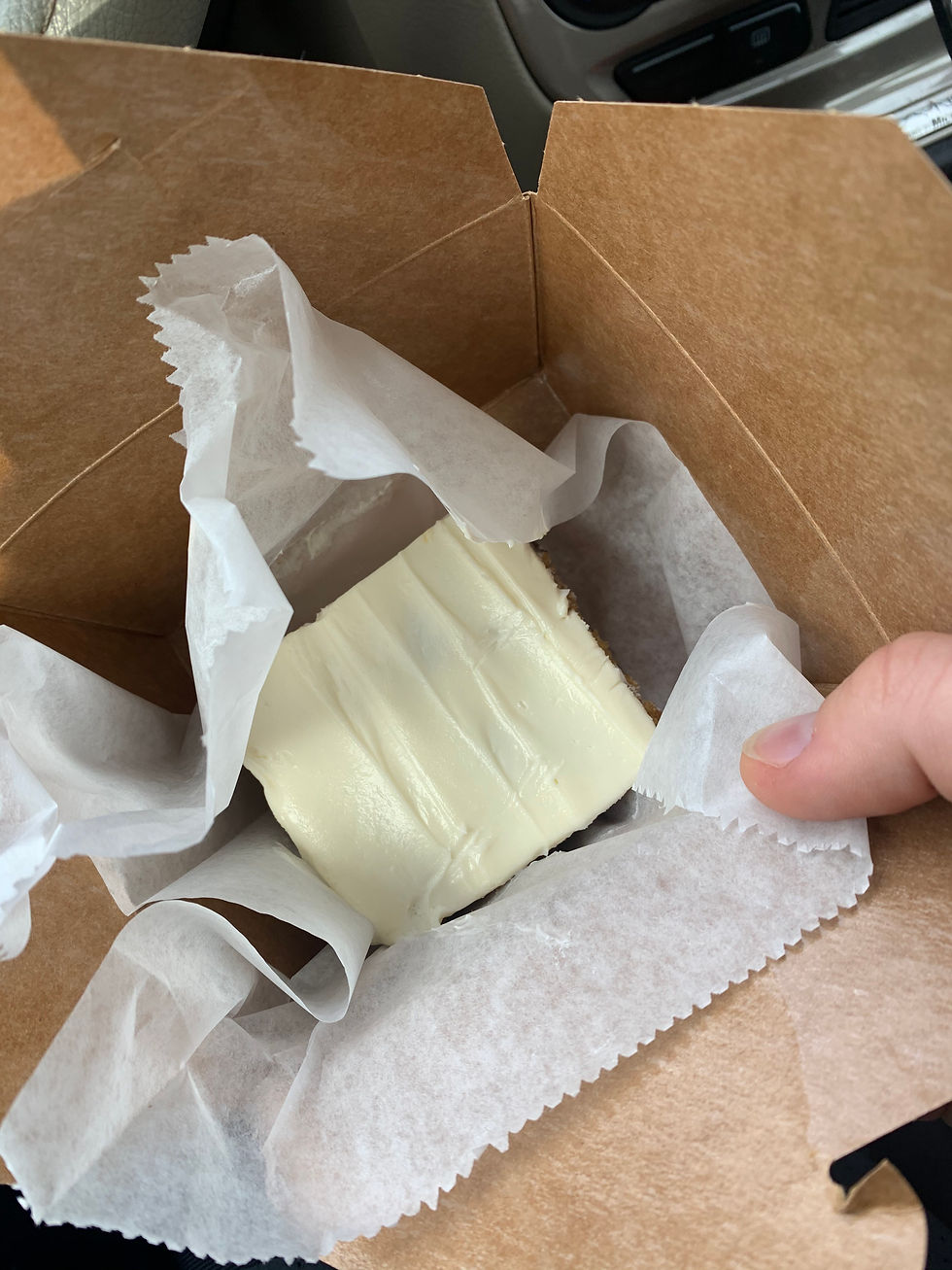

After that quick pick-me-up, I decided to drive around the neighborhood to gain a better idea of the layout and makeup of the neighborhood. College Hill's Hamilton Avenue commercial corridor, dubbed "The Avenue" by the College Hill Community Urban Redevelopment Corporation (CHCURC), is made up of several community businesses, including a home goods store, restaurants, a brewery, and a mixed-use housing development. The CHCURC's vision is to make Hamilton Avenue's business corridor a "thriving “Avenue” that includes a varied array of appealing markets, shops, businesses and residences, convenient access to safe parking and public transportation, walkability and attractive green space, and a mix of cultural and entertainment venues that attract both residents and visitors.
College Hill's housing stock is reflective of its wealthy history. Most of the older homes in the neighborhood are relatively large. The streets are all tree-lined and the atmosphere was calm when I was visiting on a Sunday morning.
My final stop in College Hill was to another ornate estate: Laurel Court. The estate was built for Peter Thomson, founder of The Champion Coated Paper Company, from 1902-1907. The 23-acre estate is a prime example of the luxury and opulence stemming from the "gilded age". The gilded age reflects a time in American history from 1870s to early 1900s, when rapid industrialization, fueled by high immigration and limited government regulation, allowed the upper classes to accumulate wealth and enjoy opulent lifestyles. Laurel Court has been the home of many wealthy and notable Cincinnatians and now serves as an event location. It was listed on the National Register of Historic Places in 1979.

At first impression, College Hill appears to be a relatively complete community. With a vibrant downtown and a healthy housing stock, it seems like College Hill is continuing to improve itself and its amenities. As one of the better-faring first-ring suburbs of Cincinnati, College Hill seems to be at an upward trajectory. Check out a recent article about The Historic Hollywood Theater within the neighborhood here.

College Hill and Mount Airy are similar in physical size, population, and demographic makeup, yet have differed in their post-suburbanization trajectories. While Mt. Airy has declined over the past several decades, College Hill has gained a reputation of a revitalizing community focusing on infill and the return of a commercial corridor.
I'll see you next week!







Comments